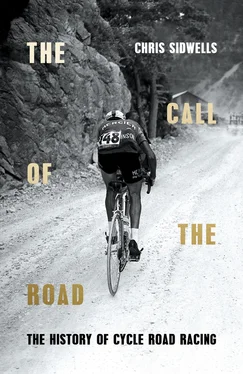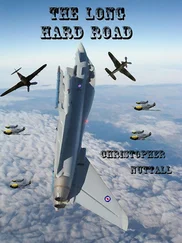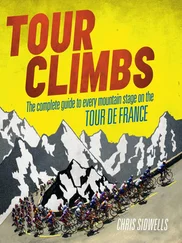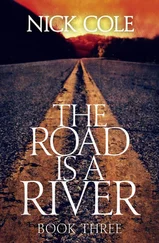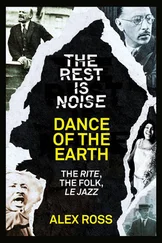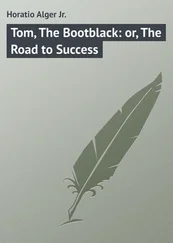The Tour de France has changed a lot. It was always big, always serious for the top riders, but now it’s very big and ultra-serious for every rider. Everybody takes their A-game to the Tour de France – they have to; anything less won’t do. Riders don’t mingle much with the public now; they are cocooned behind black glass in massive team buses. Inside they chat in air-cooled calm, or get lost in i-pods and laptops, but they are all focusing on the day ahead. The last team briefing is done. Everybody knows their job, their part in the team’s stage plan has been explained. This is their quiet time before battle.
Some of the more garrulous riders emerge from the buses first, sign autographs and pose for selfies. Some like the attention, the interaction, but they are rarely the contenders, who stay in their bus shells until the last minute. They want to avoid questions from news-hungry press. How do they feel? What do they think will happen today? Is this a crucial stage? Things the top guys know, or hope they know, but are unwilling to talk about because they don’t want input from anybody else, or in case they are just plain wrong. Contenders emerge in time to wave, nod politely at well-wishers, and head for the signing on. They have a job to do in the race, and it takes all they’ve got to do it. There’s no spare capacity to answer questions, not now, not before the stage. Afterwards they’ll talk at length.
Signing on for a stage is a cycling tradition. In days gone by it served to inform officials which riders were still in a race, but now it’s used as a device for the race speaker to introduce the riders to the spectators, so they know who is who and what they’ve won. One at a time the riders mount the steps to the speaker’s stage, walk stiffly to where they sign, wave to the crowd and by the time they’ve gone the speaker has been through their career in detail, and maybe had a word or two from them. The speaker never asks difficult questions, that’s his side of the bargain. It’s all done quickly and professionally, then the riders head for the start line and the race rolls out.
Tour de France stages have two starts; a nice smiley ceremonial one in the middle of town, then the real one when the race gets out in the countryside. The man in charge, the Tour de France director, the ultimate word on the race, Christian Prudhomme is driven ahead in a distinctive red car. The riders follow it closely, crowding its back bumper. Prudhomme emerges through the sun-roof, a red flag stretched between his hands. The riders watch it, waiting for him to drop it, and when he does all hell breaks loose.
The director’s car accelerates away, and the riders always attack. It’s like the cork coming out of a Champagne bottle, the start of each team’s stage plan, a release of pent-up energy as every rider is anxious to play his part. Tour stages need breakaways, more often referred to as breaks. On stages that suit sprinters their teams work to ensure the whole bunch is together for the finish, but part of doing that involves letting a group go ahead early and stay ahead for a while. The early attackers are trying to form such a breakaway.
In professional road races an early break creates order where otherwise there would be chaos. Breakaways provide a focus for the race; they give it shape so long as there’s nobody in them who threatens somebody else’s plan. Breakaways stop races becoming a free-for-all for the whole distance, with attack after attack until the peloton is cut to ribbons. The trick is not to let a breakaway get so far ahead it can’t be caught later. Just keep it there, keep the gap, then reel it in before the finish. Pro teams have that down to an art.
But this isn’t a sprinter’s stage, this is a mountain stage with other agendas going on. A breakaway still brings order, but the riders trying to get in today’s break come from two distinct groups. One is trying to win the stage, and the other is made up of riders trying to help their team leaders win the race overall. I’ll talk more about both groups in later chapters, but for now let’s look at how a breakaway forms at this level of racing.
For a start the other riders don’t say, ‘Go on, lads, you go ahead and we’ll see you later.’ Quite the opposite, and there’s an incredible scrap before a breakaway forms. Its mix must be right, and the other riders won’t let anything go until it is. For example, if an outside favourite for overall victory or a high overall placing tries to slip into a breakaway unnoticed, it won’t happen. It will be noticed, and the other teams will pounce on it and snuff it out.
Neither will the other favourites’ teams let one of their rivals get too many team-mates in a breakaway. If they did that, they could find themselves outnumbered later in a stage. So there will be attack and counter-attack, embryo breakaways forming and being brought back, until the right combination is allowed to go. Then things calm down, and the break is on.
But if all that sounds too choreographed, many things can spoil the script. Crosswinds, early steep climbs and other factors can and do upset the course of all the above. Early difficulties in a race provide opportunities for the strongest riders or teams to attack early and turn everything on its head. It happens a lot, especially in single-day races, but that’s another thing I’ll cover later in the book.
The British rider Steve Cummings is a current top dog at spotting the right combination of riders for a breakaway to succeed, and when a stage suits him he’ll be in it. ‘I focus totally on the first ninety minutes of a stage I know I can do well in,’ he says. ‘I don’t even think about the rest of it, I just psyche myself up for the first ninety minutes, because that’s when you have to give everything you’ve got to ensure you get in. Once I’ve done that, and I’m in, then I think about the rest of the stage.’
Cummings’s preference is for rolling terrain, or medium mountains in cycling parlance, a route with several quite long climbs, but not the big mountains of the Alps and Pyrenees. The stage I’ll try to describe here isn’t like that. It’s a typical, if imagined, stage in the Alps. One that finishes on top of one of the famous climbs: Alpe d’Huez, say, or the Col du Galibier.
Okay, on with the stage. Let’s say an early break has formed, so now the race leader’s team by tradition assumes control at the front of the peloton, trying to go fast enough to discourage further attacks but not so fast that the breakaway is caught early. If it is caught, the attacks will start all over again.
With the race leader’s team in control, the race is in perfect balance, and will stay that way for a while. Time to consider the physical presence of the Tour de France, because it’s immense. For a start there’s the Caravane Publicitaire, the procession of vehicles that precedes the riders, and it’s spectacular and weird in equal measure.
If you watch the Tour de France by the roadside – and everybody should do it once because it’s an incredible experience, very different from seeing the race on TV – the first race vehicles start zooming past you at least two hours before any cyclist is seen. They might be media or logistics vehicles on the way to the stage finish, vehicles involved with safety or official duties; cars, lorries, motorbikes and buses all zoom by. Then, after a short pause, the Caravane arrives.
Have you seen a giant fibre-glass insect lying on a flat-bed truck, or a man driving a huge gas canister or a giant wheel of cheese? Or have you been pelted with cheap plastic knick-knacks flung from a float by moonlighting students? Well you will; you’ll see them all, along with more elaborate creations, in the Caravane Publicitaire. All are products of the imaginations of publicists or design agencies, who embrace the maxim ‘weird is wonderful’, and weirder is always better for the Tour de France.
Читать дальше
